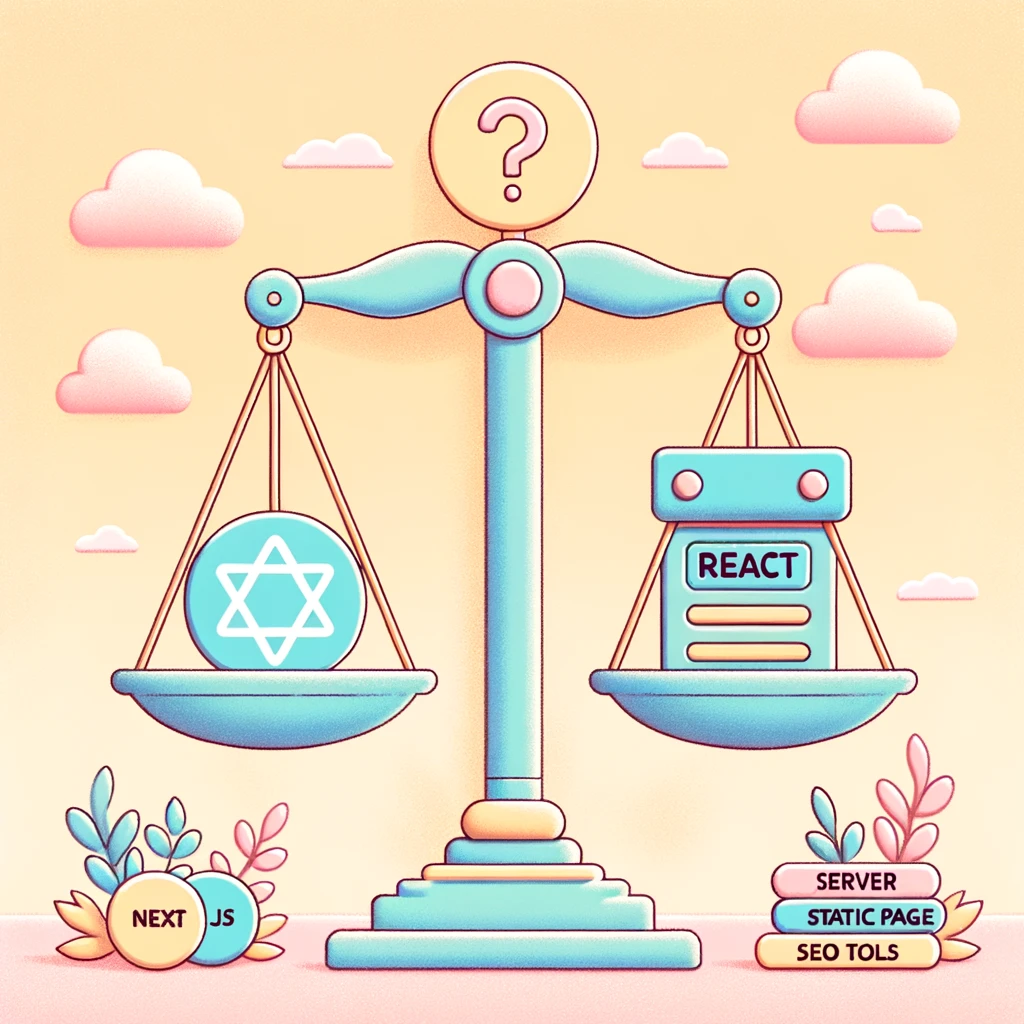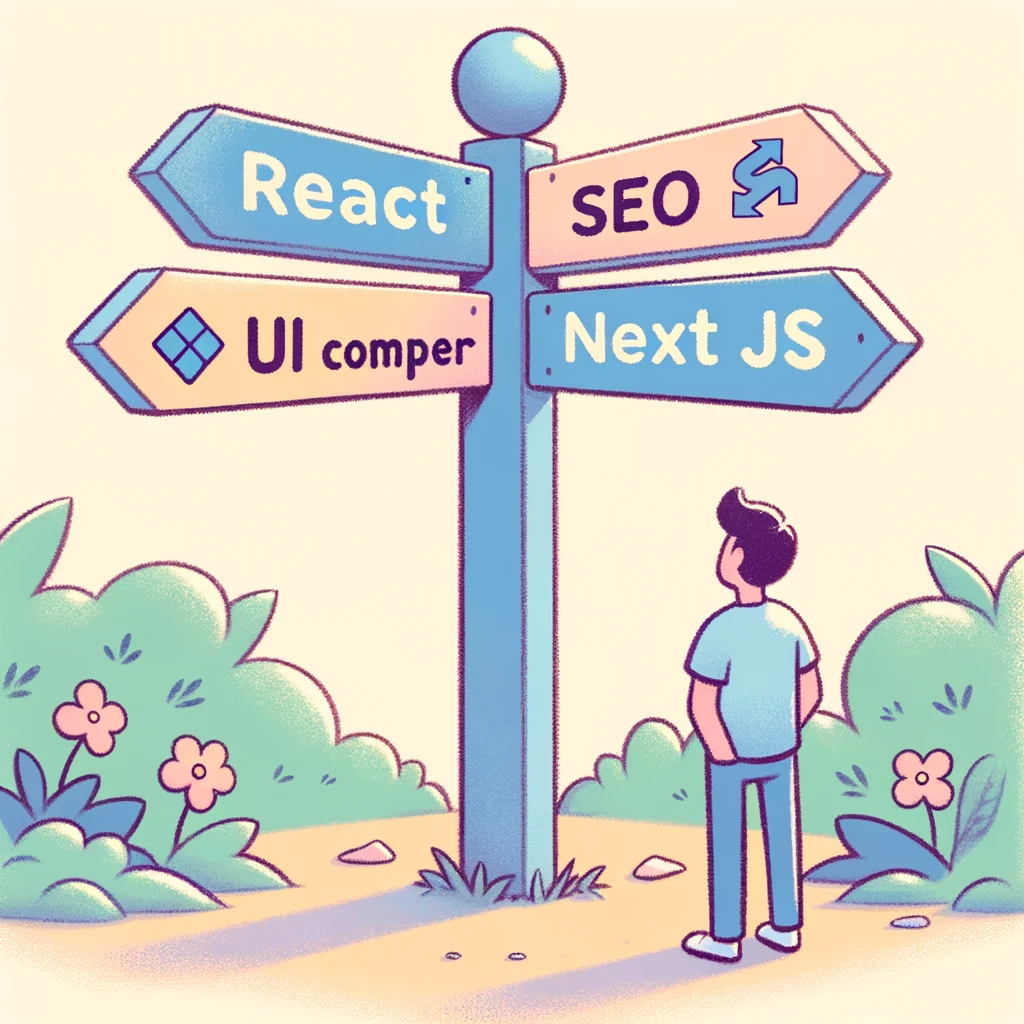Introduction to React and NextJS
React and NextJS are two popular JavaScript frameworks for building web applications. React is a library for building user interfaces, while NextJS is a framework for building server-rendered or statically-exported React applications. Both React and NextJS offer powerful tools and features that make it easy to create fast, dynamic, and interactive web applications.
But what are the key differences between these two technologies, and how do you know which one is right for your project? In this blog post, we’ll compare React and NextJS and discuss their key differences, use cases, and benefits. We’ll also provide an overview of the process for getting started with React and NextJS, and discuss some common challenges and solutions. Additionally, we’ll explore some of the alternative tools and frameworks that are available for building web applications.
Whether you’re a seasoned web developer or just starting out, understanding the differences between React and NextJS can help you make more informed decisions about the technologies you use for your projects. By comparing React and NextJS and considering their unique capabilities and use cases, you can choose the right tool for your specific needs and build the best possible web applications.
Differences between React and NextJS
There are several key differences between React and NextJS. One of the biggest differences is their architectural approach: React is a library that focuses on building individual UI components, while NextJS is a framework that provides a complete set of tools for building end-to-end web applications. Additionally, NextJS offers features like automatic code splitting and server-side rendering, which can improve the performance and SEO of your web application.
When to use React and when to use NextJS

When deciding between React and NextJS, it’s important to consider the specific requirements and goals of your web application. If you need a flexible, modular approach to building your UI, or if you’re building a large, complex application, React may be the better choice. On the other hand, if you need a framework that provides a complete set of tools for building a server-rendered or statically-exported React application, NextJS may be the better option.
Getting started with React and NextJS
To get started with React or NextJS, you’ll need to have Node.js and npm installed on your system. Once you have these tools installed, you can use the npm command to install React or NextJS and create a new project. For example, to create a new NextJS project, you can run the following command: npx create-next-app. This will create a new directory with the necessary files and dependencies for your project.
Next, you can open the project in your code editor and start building your application. React and NextJS both provide a rich ecosystem of libraries and tools that can help you build your application more quickly and easily. For example, you can use React Router to manage the routing in your application, or Redux or MobX to manage the state of your application. You can also use tools like ESLint and Prettier to improve the quality and consistency of your code.
Once you’ve built your application, you can use the npm run build command to create a production-ready build of your application. This will optimize your code and assets for performance and size, and generate a set of files that you can deploy to a web server. With React and NextJS, it’s easy to create high-quality, scalable, and maintainable web applications.
Common challenges and solutions with React and NextJS
One of the common challenges with React and NextJS is managing the complexity of large, data-intensive applications. To overcome this challenge, it’s important to use a modular approach to design and structure your application, and to use tools like Redux or MobX to manage the state of your application. Another common challenge is optimizing the performance of your application, especially when it comes to server-side rendering. To improve performance, you can use techniques like code splitting and caching to reduce the amount of data that needs to be transferred and rendered on the server.
Alternatives to React and NextJS
In addition to React and NextJS, there are several other popular tools and frameworks that are available for building web applications. Some of the most popular alternatives include Angular, Vue.js, and Ember. Additionally, for server-side web development, the Laravel PHP framework is a popular choice. Each of these frameworks has its own unique features and capabilities, and can be used for different types of projects. For example, Angular is a full-featured framework that provides a powerful set of tools for building complex, scalable applications, while Vue.js is a lightweight, flexible library that is well-suited for building small, fast, and reactive applications.
When choosing between React, NextJS, and these other frameworks, it’s important to consider the specific requirements and goals of your project. Each framework has its own strengths and weaknesses, and the right choice will depend on the specific needs of your project. Additionally, it’s important to consider the ecosystem of libraries, tools, and community support that each framework has, as this can make a big difference in the long-term success of your project.
To learn more about these alternative tools and frameworks, you can visit their websites and browse their documentation, tutorials, and forums. You can also try out each framework by building a simple application, and compare the experience and the results to see which one is the best fit for your project.
Conclusion

In conclusion, React and NextJS are both powerful tools for building web applications, but they have different strengths and capabilities. By understanding the key differences between these two technologies, you can choose the right tool for your specific project and build high-quality web applications with confidence. Whether you use React or NextJS, you’ll have access to a vibrant ecosystem of libraries, tools, and community support.
In addition to React and NextJS, there are several other popular tools and frameworks that are available for building web applications. By exploring these alternatives and comparing their features and capabilities, you can make an informed decision about the best framework for your project and build the best possible web application.
Whether you’re a seasoned web developer or just starting out, understanding the differences between React and NextJS can help you make more informed decisions about the technologies you use for your projects. By comparing React and NextJS and considering their unique capabilities and use cases, you can choose the right tool for your specific needs and build the best possible web applications.




